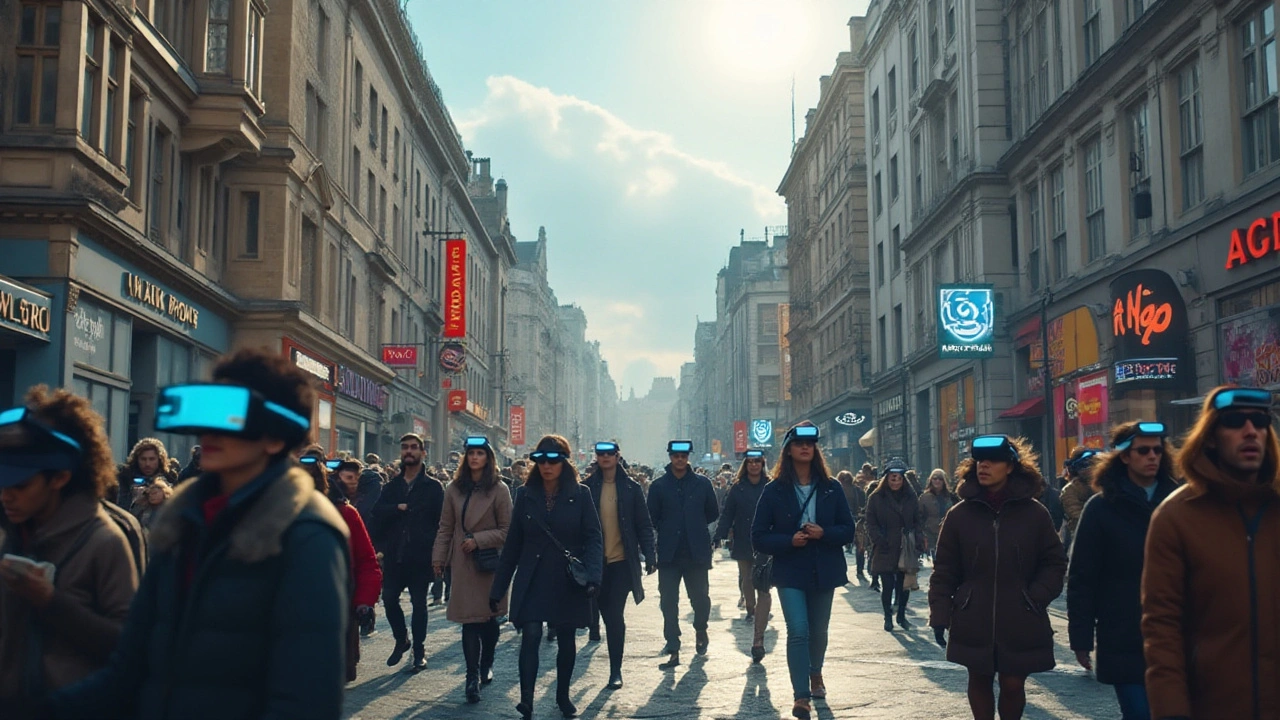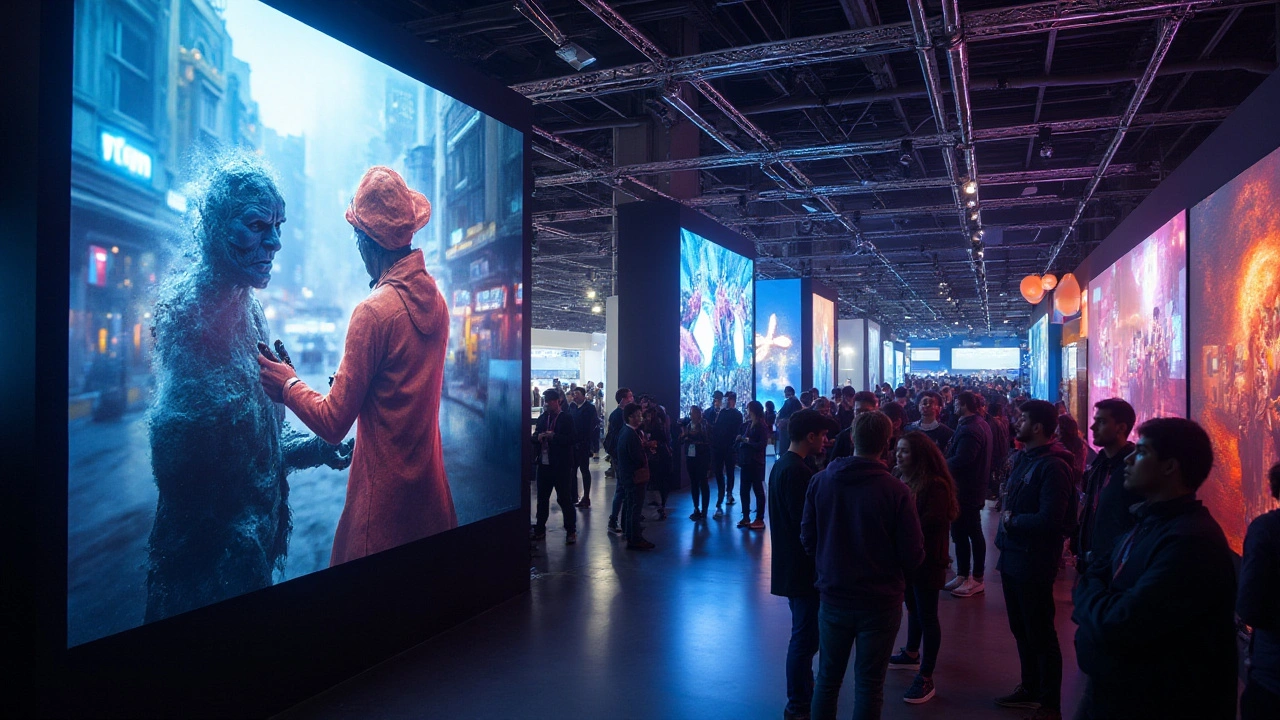Once upon a time, video games were all about immersive stories, thrilling challenges, and breath-taking visuals. Fast forward to today, and we find a new player in the game: in-game ads. These ads have evolved into a significant revenue stream for developers, especially in an era defined by free-to-play games.
As intriguing as it sounds, not every gamer is thrilled by the sight of blinking banners and pop-ups. Yet, when balanced well, in-game ads can enhance rather than interrupt the gaming experience. To grasp why in-game ads have become a cornerstone of modern gaming monetization, we need to dig deeper into how these ads have been steadily integrated into our beloved virtual worlds.
- Evolution of In-Game Advertising
- Types of In-Game Ads
- Impact on Player Experience
- Best Practices for Seamless Integration
Evolution of In-Game Advertising
The journey of in-game ads began when video games transitioned from personal hobbies to global phenomena. In the early days, games relied on straightforward purchase models, where the player's experience was free from commercial interruptions. The landscape began to change with the advent of online gaming, which opened doors to new monetization strategies. It was shareware games in the 1980s and 1990s that gradually introduced the concept of ad-driven content, setting a precedent for integrating ads into gameplay.
As technologies advanced, so did the sophistication of digital ads. The emergence of mobile gaming acted as a catalyst, propelling the advertising trend into the mainstream. Suddenly, ads were not just static banners; they became dynamic entities that could tap into a game's unique aesthetics. According to a report by eMarketer, global in-game advertising spending surpassed a staggering $4 billion in 2023, showcasing its significant growth over the years.
The immersive nature of modern video games offered advertisers a creative playground, encouraging game developers to explore myriad ad formats. Some opted for native ads that blend seamlessly into the game world, providing a non-intrusive ad experience. Others experimented with rewarded ads that offer in-game incentives upon viewing. A famous example is the wildly popular mobile game Angry Birds, which skillfully integrated ads without alienating its user base.
While some gamers initially met in-game ads with skepticism, the industry's persistent evolution shifted perceptions. Ads morphed into an essential toolkit for developers. Industry leaders recognize that appealing gaming monetization methods must strike a balance between profitability and player satisfaction. As Alex Stamos, an influential voice in the space, notes, "The future of gaming relies on crafting ad experiences that enhance rather than hinder the player journey."
The integration of ads continues to evolve, driven by technological advancements such as augmented and virtual reality. These breakthroughs usher in new dimensions for ads to become even more immersive and interactive. Imagine a future where players can inspect a virtual billboard, with the same realism as a character in the game does—the possibilities are endless. As innovative ad formats become more normalized, it's crucial for game developers to remain attuned to player feedback, ensuring ads contribute positively to the gameplay experience.

Types of In-Game Ads
Within the vibrant world of gaming monetization, in-game ads have taken on various forms, each with its unique appeal and method of reaching players. Advertisers and developers alike are constantly innovating to keep players engaged while sneaking in advertisements cleverly integrated into gameplay. One common method is through display ads, recognizable as banners or interstitials. These ads often appear during breaks in action, such as loading screens or pauses, ensuring they catch the player's attention without disrupting the gaming experience.
Not far behind are video ads, which players may encounter as rewarded or non-rewarded variations. The concept of rewarded video ads piques interest due to the value exchange principle; players willingly watch an ad to gain in-game currency, lives, or other perks. A survey by IronSource revealed that 62% of players appreciate the option to watch ads for rewards, indicating a favorable reception if executed correctly. Non-rewarded video ads, on the other hand, might be less compelling, as they simply play at intervals, hoping players will take notice out of curiosity rather than motivation.
Another innovative approach is native ads, designed to blend seamlessly with the game’s environment. For gamers immersed in sports simulations, these might manifest as real sponsorships lining a virtual stadium or billboards promoting familiar brands. This style of advertising aims to mirror the realism of the sport itself. Mobile games, too, harness this subtlety with ads that look and feel like a natural part of the game, not a separate entity.
We must acknowledge the rise of playable ads, a clever twist allowing potential customers to sample a mini-version of another game product. These ads have gained traction for their interactivity, providing users with a taste before deciding on a download. Playable ads often result in higher engagement due to their participatory nature, bridging a closer connection between the gamer and the advertised content.
In a 2023 report, Deloitte observed that gamers today are processing in-game ads differently than traditional advertisements. The absorption and retention rates for ads integrated into gaming environments proved markedly higher. This insight underscores how critical it is for developers to craft ads that resonate with the gaming monetization culture, enhancing rather than hindering the player's journey.
Those interested in diving into this advertising domain must maintain a balance between presence and subtlety. Whether employing augmented reality to create ads unique to virtual spaces, or choosing to innovate with dynamic ads that update in real-time, the realm of advertising in games remains a rapidly evolving frontier. Insights from these methodologies continue to inform how in-game ad campaigns are crafted, ensuring advertisers keep pace with the ever-expanding expectations of gamers worldwide.

Impact on Player Experience
In-game ads have woven themselves into the tapestry of gaming, leaving a profound impact on how players interact with virtual worlds. The player experience is a sacred realm, one that developers tread with caution. While ads in other platforms, like social media or television, are expected, their presence in gaming stirs a mix of emotions. The key challenge lies in ensuring that ads enhance rather than detract from the gaming experience. The integration method makes all the difference. A well-placed ad can blend in seamlessly, complimenting the game environment and occasionally even enriching the story. However, when done poorly, it disrupts gameplay, turning potential joy into frustration. These interruptions erode the immersive experience that games strive to offer, leaving players disengaged.
The success of in-game advertising largely depends on understanding the player demographic. Younger players, born and bred in the digital age, may have a higher tolerance for in-game ads compared to older players who cherish uninterrupted play. A study by Newzoo in 2023 reported that 67% of gamers are open to non-intrusive in-game ads if they receive rewards in return. This insight highlights the importance of offering tangible benefits to offset the potential disruption.
Format plays a crucial role in determining the impact on the player experience. Ads that are cleverly integrated, such as billboards in a racing game's virtual cityscape or branded items that players can interact with, often receive positive responses. Gaming monetization is successful when the ads feel like a part of the game’s universe. In contrast, pop-ups or sudden cuts to commercial videos create friction, distancing players from their gaming immersion. The context and frequency of ads must also be judiciously managed. Bombarding players with ads at every turn can lead to frustration and a potential exodus from the game. Instead, strategic placement, ensuring ads appear at natural breaks or pauses, maintains a harmonious balance.
"We see ads as part of the ecosystem of a successful game, not just a necessary evil. It's about finding the sweet spot where ads add value either through engagement or rewards while respecting the game's flow," says Jessica Mulligan, a veteran game developer, emphasizing the dual role ads can play.
Strategists have found that tailoring ads to fit the style and tone of the game is crucial. A gritty, post-apocalyptic shooter may benefit from ads showcasing survival gear, tapping into the same pulse as the game's narrative. On the other hand, a whimsical puzzle adventure would benefit from ads as playful and light-hearted as its landscapes. This alignment not only preserves the player experience but can also build a sense of cohesiveness that enhances brand recall.
| Ad Type | Player Tolerance | Engagement Factor |
|---|---|---|
| Non-intrusive Banner | High | Moderate |
| Reward-based Video | Moderate | High |
| Interactive Story Ad | High | High |
| Pop-up Ad | Low | Low |
Effective advertising in games suggests a win-win scenario, where both players and developers benefit. For players, thoughtfully integrated ads can provide additional layers of engagement, or even rewards, enhancing their gaming experience. For developers, ads offer a much-needed revenue stream that can fund more content, features, or even other game projects. This ecosystem thrives on mutual respect and understanding, aiming to leave both parties satisfied rather than seeking compromise.

Best Practices for Seamless Integration
In the world of gaming, where virtual javelins meet mythical dragons, integrating in-game ads requires a touch of finesse. The challenge lies in embedding these ads artfully so they enrich, rather than disrupt, the gaming adventure. There are several methods to achieve this balance, starting with understanding your audience. Gamers crave immersion, and breaking this spell can spell disaster for any advertising attempts. Therefore, knowing the player's experience and their pivotal interaction points within the game is crucial.
It is essential to choose the right ad format that aligns with the game’s theme and pace. For instance, static ads might work well in a racing game, displayed as billboards along the track. Meanwhile, rewarded video ads provide incentives for players to opt-in, usually in exchange for in-game rewards. This practice not only enhances player engagement but also boosts revenue seamlessly. Ads need to be non-intrusive while still capturing attention. This balance can be intricate and often challenging to perfect.
Timing and Placement
Judicious timing is vital. Ads should ideally appear during natural pauses in gameplay, such as during loading screens or between levels. This tactic minimizes disruption and feels like a natural part of the game. Placement is equally crucial, as poorly placed ads can lead to frustration. Integrating ads into the game's environment—like placing product endorsements on the jerseys in a sports game—can make them more acceptable to players. Steve Rahausen, a famed game developer once mentioned,
"An ad well-timed and well-placed becomes part of the story."By contextualizing ads within the game's universe, developers can create more authentic experiences.
Player Feedback and Continuous Iteration
Listening to gamer feedback should be at the core of any gaming monetization strategy. Players are not shy about vocalizing their enjoyment or disdain, and these inputs can serve as invaluable data for refining the integration processes. Developers should implement a flexible approach to ad insertion, allowing for adjustments based on user interaction trends and feedback. This method guarantees that players feel heard and valued while ensuring that ad placements remain effective.
Moreover, keeping up with technological advancements in advertising can offer fresh opportunities for integration. Augmented reality ads and interactive ad formats are budding possibilities that might soon redefine advertising in games. Keeping an eye on these developments ensures that your strategies do not become outdated. As the gaming landscape continues to evolve, ensuring that ads enhance rather than hinder the experience is pivotal to success.
Ultimately, the future of in-game advertising holds immense potential. A careful strategy that respects the gaming audience while embracing innovation can not only monetize effectively but also ensure that the gaming experience remains as captivating and immersive as ever. Many developers have discovered that when executed thoughtfully, in-game ads can even improve gameplay, making them not just a revenue stream but a game feature themselves.





